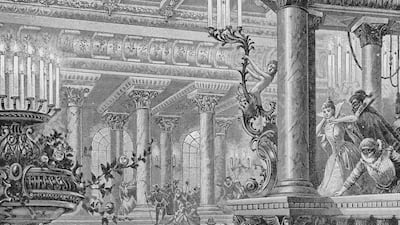A Lebanese legend came to Dubai, a Swedish king was assassinated and a Chinese army was discovered – here are some interesting things that happened on this day in history.
1. Fairuz performed in Dubai
Year: 2001
Crowds at the auditorium in American University in Dubai were in for a real treat when Lebanese diva Fairuz performed on March 29, 2001. The singer, 66, was accompanied by a 40-member orchestra and chorus, which included musicians from the Armenian Philharmonic Orchestra.
Born Nouhad Haddad in Lebanon in 1934, Fairuz, who is now aged 85, is one of the most influential Arab singers of all time, with a vast repertoire of more than 1,000 songs (not all of which have been released).
Her first concert was in 1957, in Baalbeck, and by the 1970s she’d achieved worldwide fame after her first North American tour. She has also starred in a number of theatrical plays and films, and is now famously reclusive, having not performed publicly in nearly a decade.
2. The king of Sweden was assassinated
Year: 1792
It all happened at a midnight masquerade ball at Stockholm’s Royal Opera. King Gustav III of Sweden was shot in the back, and he died 13 days later. He had reigned for 21 years, and was succeeded by Gustav IV Adolf.
Gustav III had been known for introducing a number of enlightened reforms, including freedom of the press, the abolishment of the use of torture in legal investigation and religious tolerance. But he had his critics in parliament, who rejected many of his reforms. Later, he also declared war on Russia in 1788, only narrowly avoiding complete disaster with a peace treaty two years later.
Captain Jacob John Anckarstrom, a Swedish military officer, was the one who assassinated him. He was executed on April 27 that same year.
3. The Terracotta Army was discovered
Year: 1974
On this day in 1974 farmers were digging a well in the Shaanxi province of northwest China when they found something truly wondrous: an entire army of life-sized terracotta sculptures depicting the soldiers and horses of Qin Shi Huang, the first Emperor of China. This was the first modern sighting of the Terracotta Army, encompassing a form of funerary art buried with the emperor dating back more than 2,000 years.
In the years since, researchers have unearthed about 600 pits in a complex of underground vaults. There are an estimated 8,000 warriors that we know about.
In January of this year, a further 200 were uncovered.
It is believed that it took about 700,000 labourers as many as 30 to 40 years to complete the army and the tombs. Today, the site is a popular tourist destination.
4. Billie Eilish stormed onto the music scene
Year: 2019
It's amazing how far she's come in such a short amount of time, considering singer-songwriter Billie Eilish only released her debut studio album, When We All Fall Asleep, Where Do We Go?, a year ago today.
The 18-year-old cleaned up at the Grammy Awards this year, winning five categories, including the big four: Record of the Year, Album of the Year, Song of the Year and Best New Artist.
She first gained media attention in 2016 when she uploaded the song Ocean Eyes to SoundCloud, but now she is undoubtedly a household name across the world.
Her first album, which she largely co-wrote with her brother Finneas O’Connell, sold more than a million copies in the US alone and made her the youngest female solo act to chart at number one in the UK. The music was produced in O’Connell’s small bedroom studio in Los Angeles.
5. The Louvre Museum got a new entrance
Year: 1989
Celebrated Chinese-American architect Ieoh Ming Pei, known more commonly as IM Pei, was appointed to develop a grand new entrance for France’s Louvre Museum in 1983, but it only opened in 1989. The now instantly recognisable glass pyramid opened to the public on March 29, 1989, the bicentenary year of the French Revolution.
There is a main pyramid and three smaller ones. The biggest has the same proportions as the Great Pyramid of Giza, a nod to the prestigious Egyptian antiquities collection inside the museum. There’s also an inverted pyramid, which is only visible from underground, when you use the Carousel entrance of the Parisian landmark.
The entrance wasn’t popular when it was built – critics accused it of devaluing the architecture – but today it is a much-loved tourist attraction in its own right.







